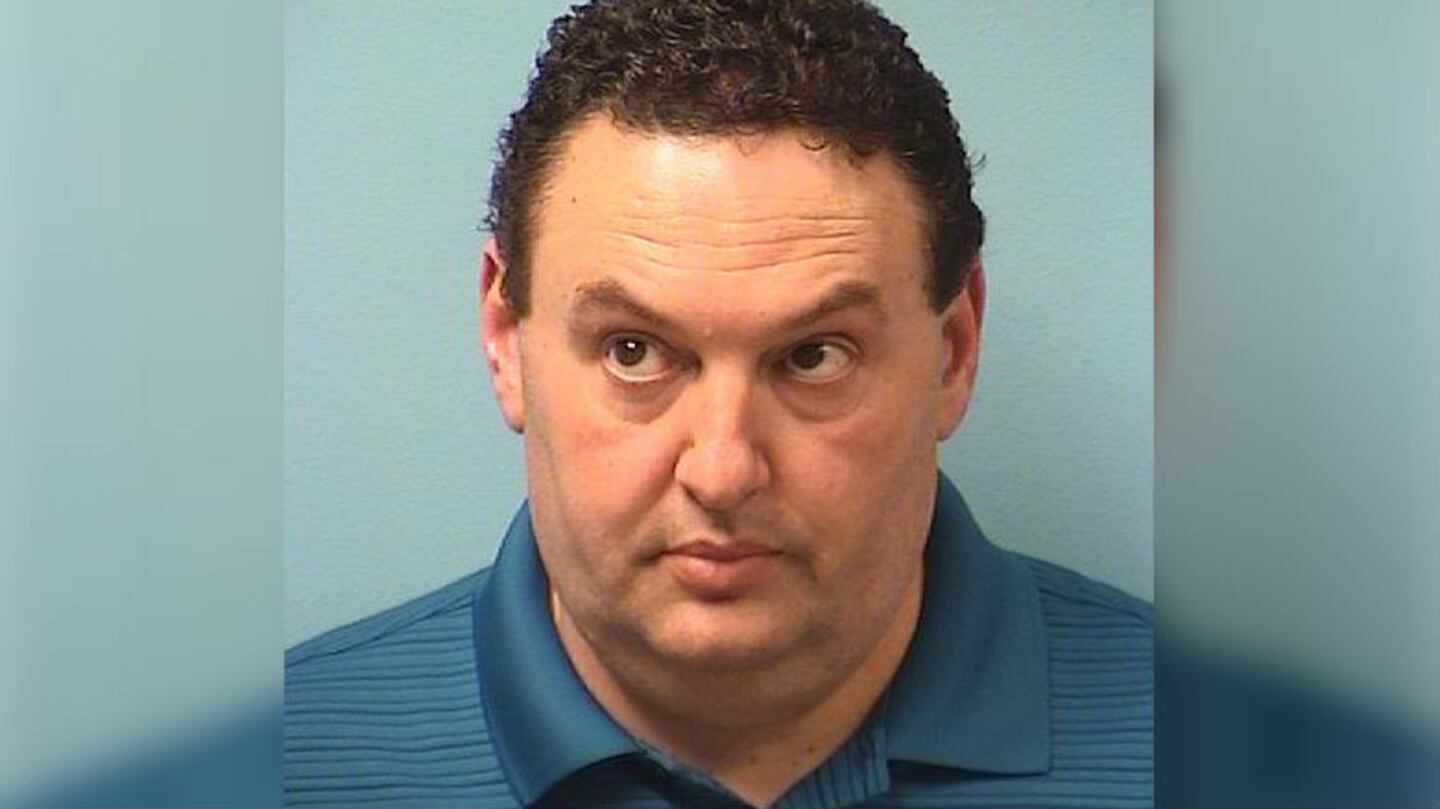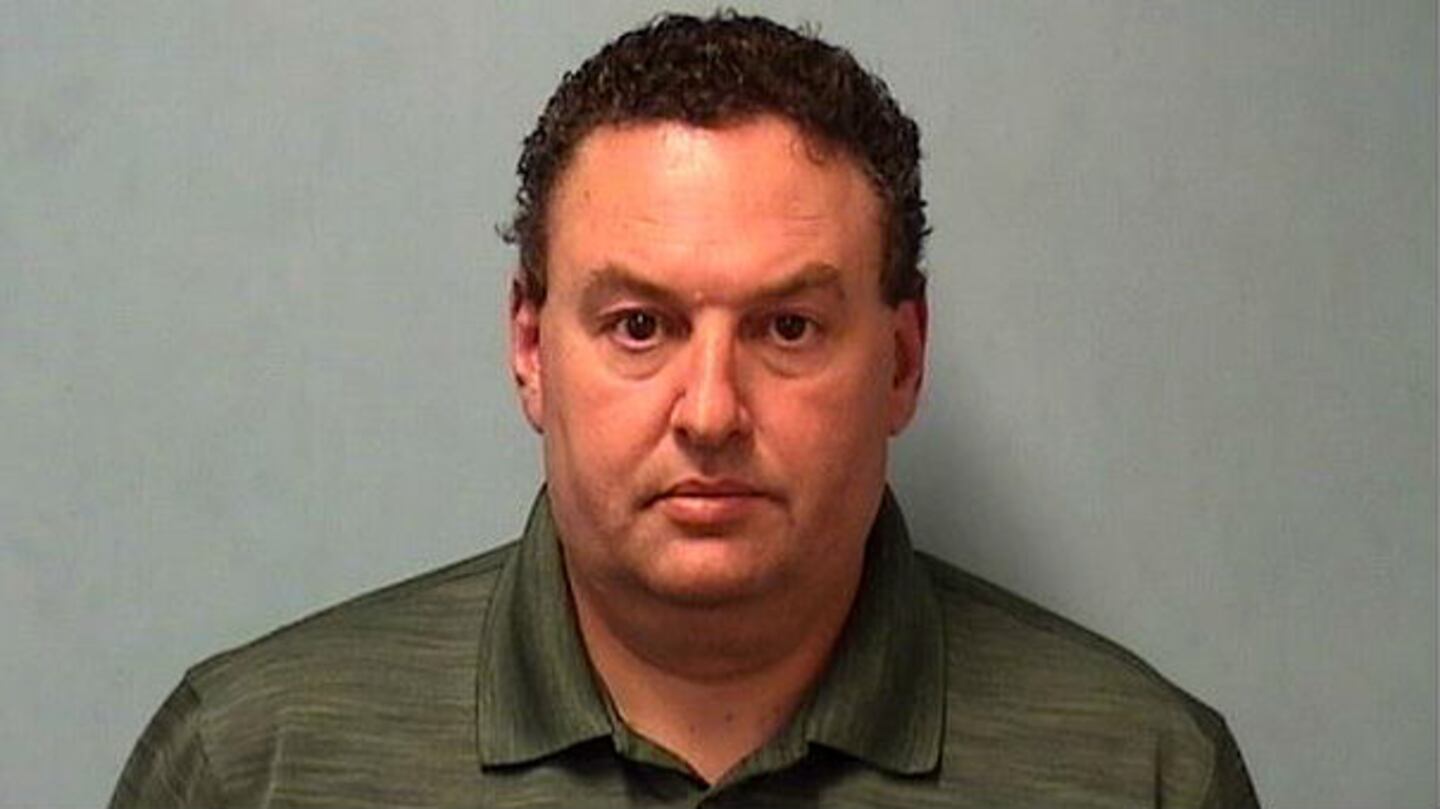MINNEAPOLIS — A Minnesota man was arrested last week after DNA from a used napkin he threw away at his daughter’s hockey game matched DNA left at the scene of the brutal 1993 stabbing death of a Minneapolis woman.
Jerry Arnold Westrom, 52, of Isanti, is charged with second-degree murder in the slaying of Jeanne Ann Childs, according to the Minneapolis Police Department. The arrest was made Feb. 11 following a years-long renewed investigation by Minneapolis detectives, the Minnesota Bureau of Criminal Apprehension's forensic lab, Hennepin County Sheriff's Office investigators and Minneapolis-based FBI agents.
"Our efforts to increase public safety and ensure justice has no timeline. This case is an excellent example of great collaboration between our law enforcement partners," Minneapolis Police Chief Medaria Arradondo said in a news release.
TRENDING NOW:
Jill Sanborn, special agent in charge of the FBI’s Minneapolis field office, said the case “underscores law enforcement’s ability to use every tool at its disposal” to solve crimes.
"We all hope Jeanne's family can finally find peace as a result of this tenacious effort by officers and agents," Sanborn said.
The victim was Jeanne Ann Childs.
— Angel † (@80sbabeeAngel) February 15, 2019
Be at peace now 🌹 pic.twitter.com/bryaxWeENN
Members of Childs' family were in the courtroom Friday as Westrom made his first court appearance, according to the Minneapolis Star Tribune. Westrom's wife, son and daughter were also there, along with about 20 other supporters.
They watched as the well-known businessman’s defense attorney, Steven Meshbesher, successfully argued that his client’s bail should be reduced from $1 million to $500,000.
Meshbesher argued that Westrom, a lifelong resident of Minnesota, was not a flight risk. According to the Star Tribune, he manages an organic farm just outside of Isanti.
"What we've got is a very unsolved case and it was charged, in my opinion, prematurely," Meshbesher said, according to the Star Tribune.
Westrom was released on bond Friday night, according to Hennepin County Jail records.
A violent death
The criminal complaint against Westrom, which was obtained by the Star Tribune, outlines Childs' violent June 13, 1993, death:
Minneapolis police officers were called to an apartment Childs allegedly used for prostitution because another tenant in the building saw water coming from the apartment. The officers found Childs dead in her running shower, naked except for a pair of socks.
She had dozens of stab wounds, including several inflicted after she was already dead, the complaint said.
The walls of Childs' bathroom, bedroom and living room were covered with blood, the Star Tribune reported. Finger, palm and footprints were found at the scene.
It was not immediately clear if any of those prints matched Westrom.
Investigators at the time collected Childs’ bedding, a towel, a washcloth and a T-shirt, as well as a bloodstain found on the sink,
.
Childs’ live-in boyfriend was ruled out as a suspect after detectives confirmed he was not in Minnesota at the time of her death.
The case soon went cold, but a Minneapolis detective, encouraged by the advances in DNA technology, renewed the investigation in 2015, the Star Tribune reported. DNA samples from the scene were sent to the Bureau of Criminal Apprehension and a private DNA company.
FBI agents ran the results through an online genealogy website last year, using the same technique California cold case investigators used to secure the arrest of Joseph James DeAngelo, the alleged Golden State Killer who killed more than a dozen people and raped more than 50 women in the 1970s and 80s.
Since DeAngelo's arrest, about 50 other cold cases across the U.S. have been solved using public genealogy websites, the Star Tribune reported.
Following the DNA trail
The genealogy website used by Minnesota investigators led them to two possible suspects in Childs' slaying, one of them Westrom. Hennepin County Attorney Mike Freeman told the Star Tribune either Westrom or a close family member had apparently submitted DNA to learn more about their family tree.
Westrom, who was 27 and single at the time of Childs' killing, worked in Minneapolis in 1993. He moved about six months after the homicide, the newspaper reported.
Investigators began trailing Westrom in January, seeking an opportunity to surreptitiously obtain a sample of his DNA. At his daughter’s hockey game at a Wisconsin hockey rink, they had their chance.
Westrom bought a hot dog from the concession stand, wiping his mouth with a napkin when he was done eating, the Star Tribune reported. Investigators picked up the napkin after he tossed it in the trash.
DNA taken from the napkin matched the DNA from the Childs crime scene, Freeman said. Another DNA sample taken from Westrom after his arrest confirmed the match.
The prosecutor said he is confident the case will withstand any legal challenges by the defense.
"When discarding something in the trash, the (U.S.) Supreme Court has said many times, it is fair game," Freeman said.
The MPD & Federal Bureau of Investigation announced an arrest in connection w/ the 1993 murder of Jeanne Ann Childs, 35, of Minneapolis. A suspect was arrested in Waite Park and is being held on probable cause of murder following multi-year investigation: https://t.co/F4UU7b6YpF
— Minneapolis Police (@MinneapolisPD) February 12, 2019
Westrom's attorney told Minnesota Public Radio News that the evidence against his client is thin. He argued that the DNA sample obtained at the crime scene was from semen, not blood.
Because Childs was a sex worker, the evidence links him to possible sex, but not the homicide, the defense lawyer said.
"The sperm shows up allegedly matching, but not the blood," Meshbesher told MPR News. "What we've got is not any record of violence, not connecting it to the blood, not to the weapon, because they didn't find it."
MPR News reported that the criminal complaint alleged that the DNA samples from the crime scene came from Childs' comforter and the towel.
The Star Tribune reported that investigators have not yet compared Westrom's DNA to the blood found in Childs' bathroom. The complaint stated the case remains under investigation.
“They don’t know what the facts are,” Meshbesher told MPR News. “You don’t charge a case before you know what the facts are. You need to do the investigation first.”
A sordid arrest history
Westrom denied all the allegations against him, the criminal complaint said. He denied recognizing Childs, being in her apartment or having sex with any woman in 1993. Investigators said he told them he had no explanation for how his DNA could have been at the crime scene.
Meshbesher disputed the account of his client's interview given in the complaint, MPR News reported.
Despite Westrom's high standing in his community, part of which comes from his involvement in youth sports, he has a record of drunken driving convictions dating back to 1996, court records showed.
He also has two arrests on his record for prostitution-related offenses. A 2012 charge was dismissed, but he was convicted in Stearns County in 2015 of trying to hire a prostitute.
Westrom was snagged in a police sting in which he thought he was soliciting a teenager for sex. His probation for that offense ended in February 2018,
.
Childs’ mother, Betty Eakman,
the story of her troubled daughter, who dropped out of school in the sixth grade and was a repeat runaway as a teen. Eakman said her daughter’s problems seemed to begin following the 1971 shooting death of her stepfather, who was killed by his brother-in-law and business partner.
She said her daughter bounced from place to place in Minneapolis prior to her death. Eakman expressed gratitude for the science that helped solve her daughter’s slaying.
"I am so happy they have come out with this new technology so it can help other cases to be solved," Eakman told the Star Tribune.
Childs’ sister, Cindy Kosnitch, credited Eakman with keeping Childs in the minds of investigators.
"This has been very hard on our family, of course, but I have a very determined mom who always kept in contact with Minneapolis police," Kosnitch told the paper. "She refused to let Jeanie be forgotten and wanted some type of closure, as most parents would."
Cox Media Group







